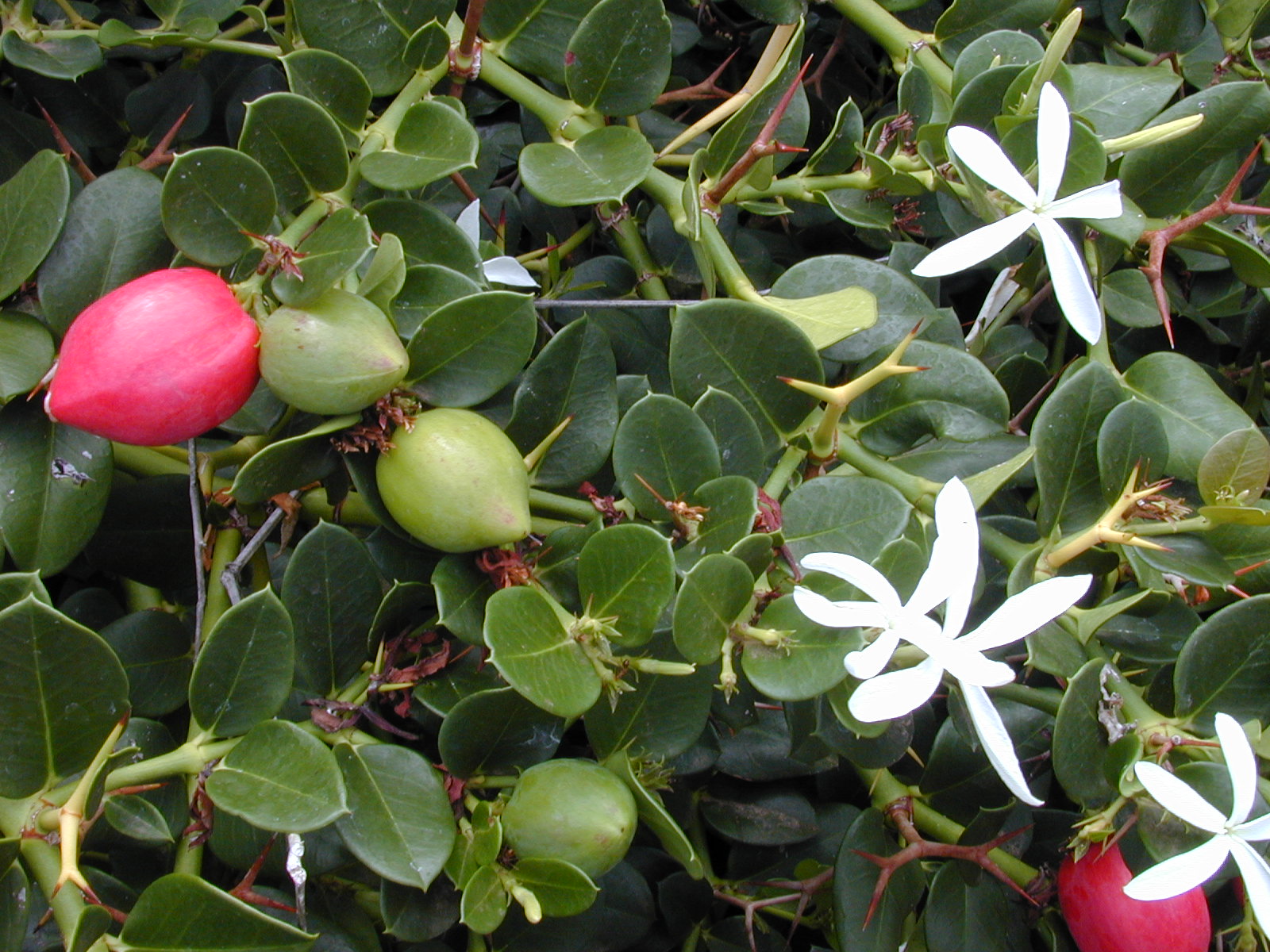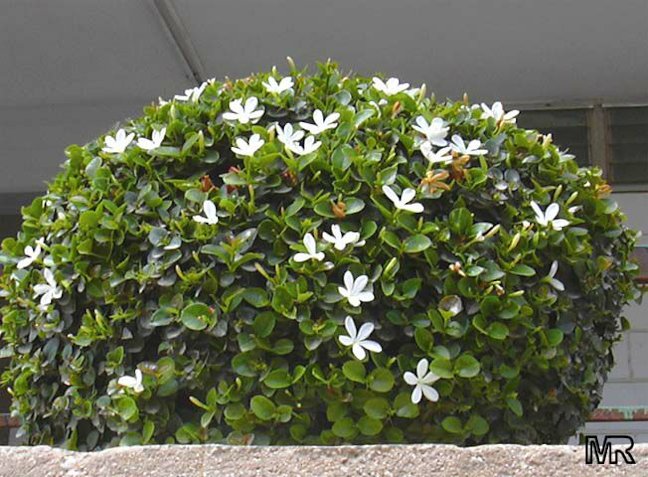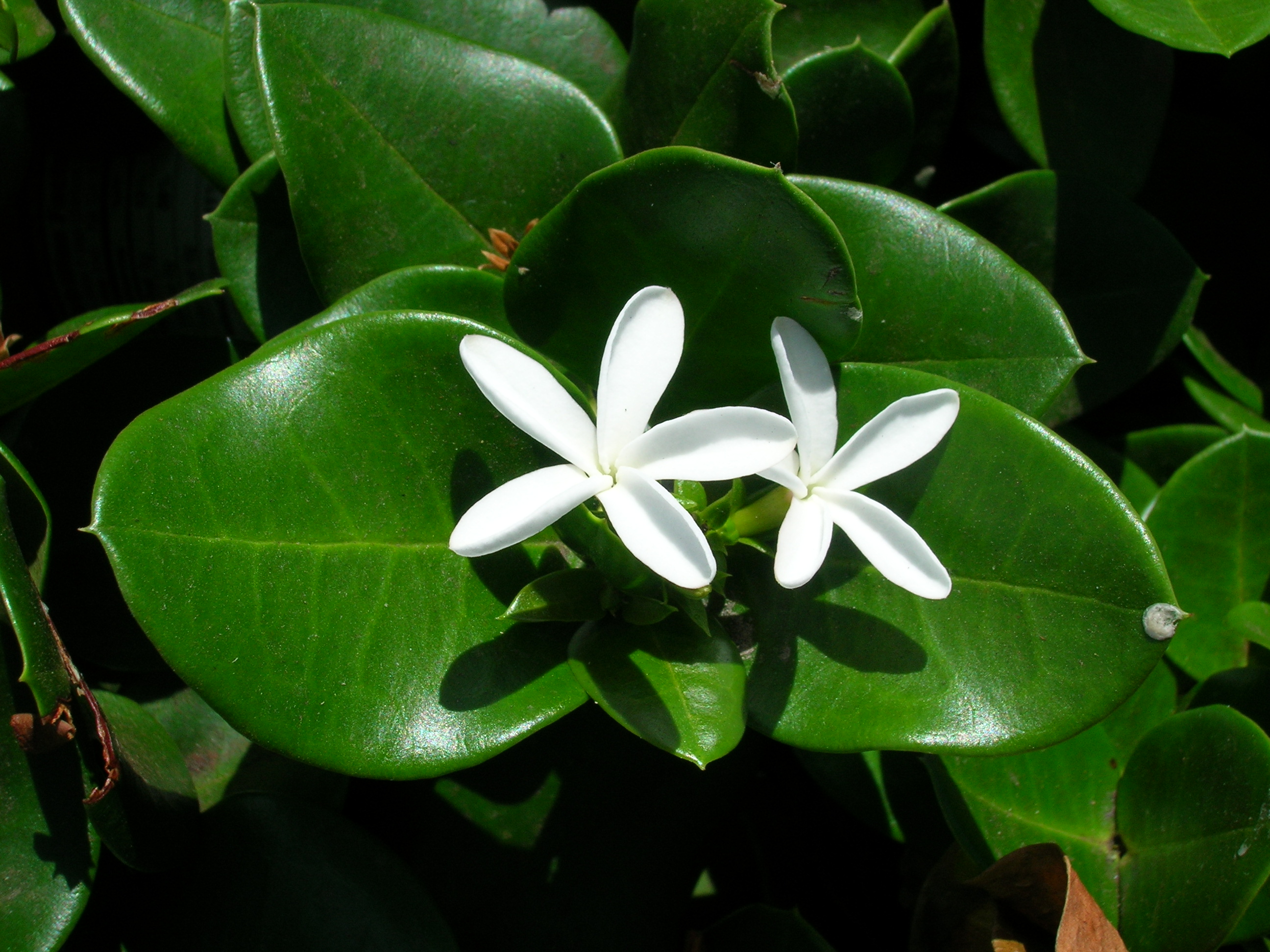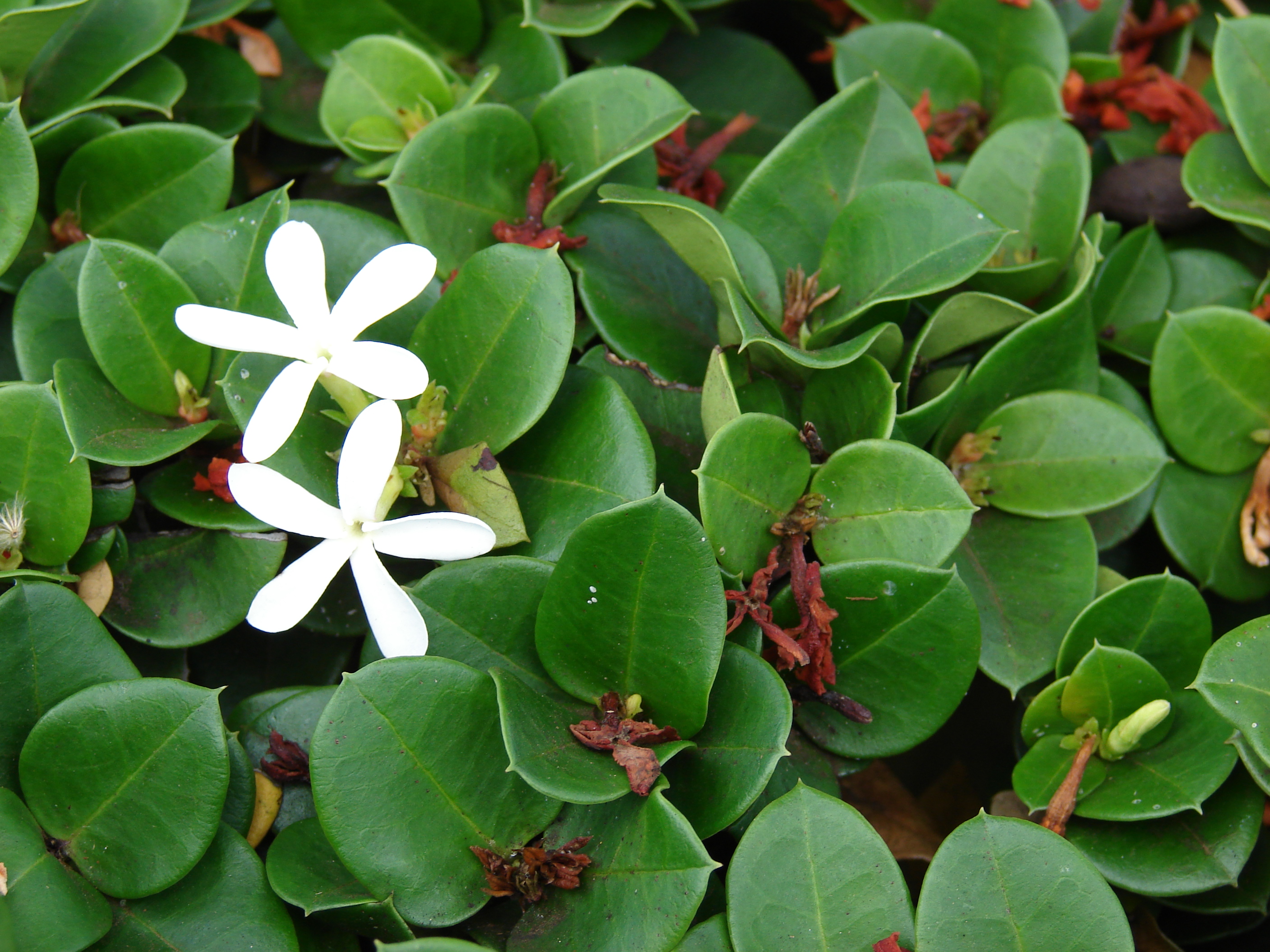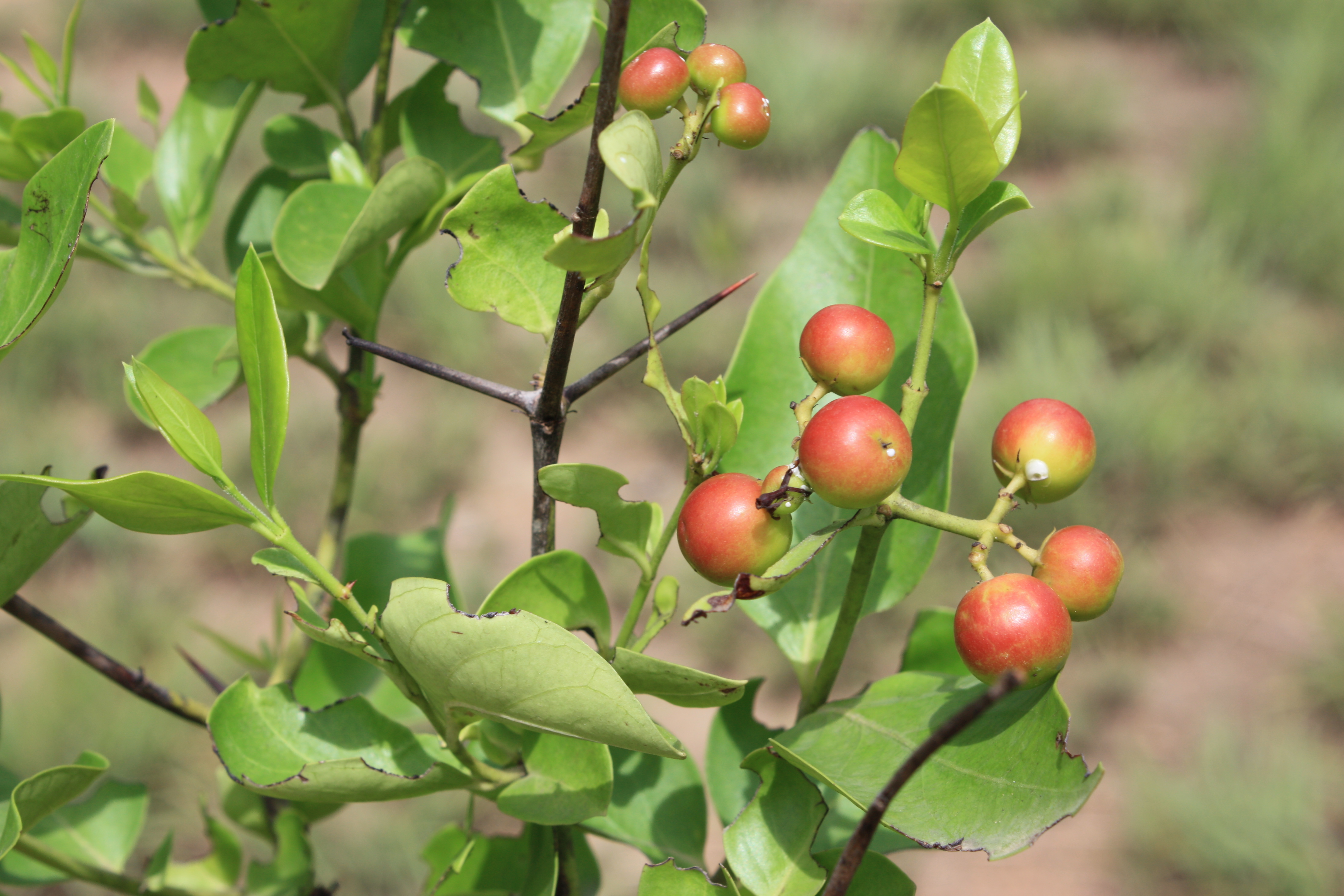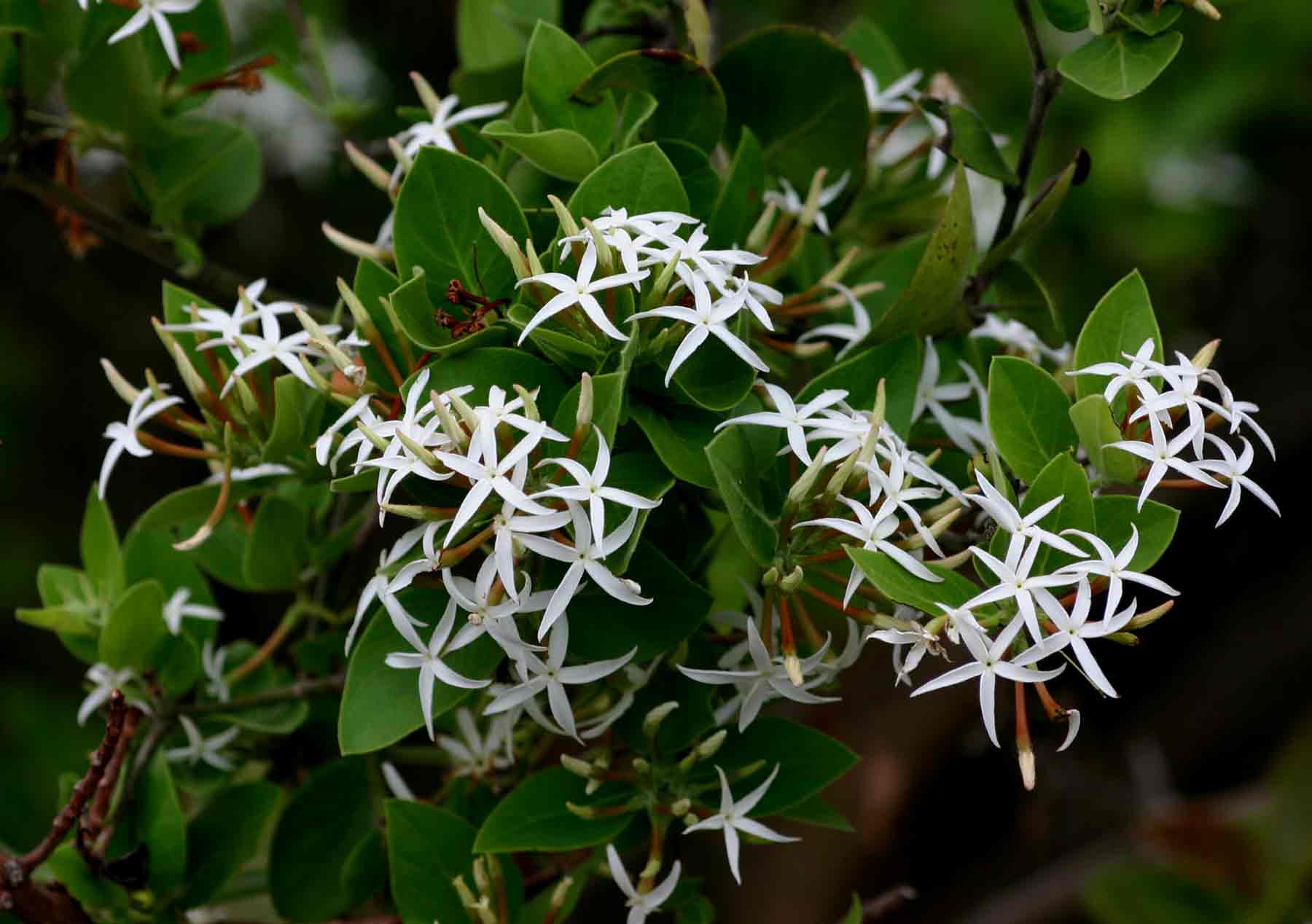Carissa
Natal plum ( Carissa macrocarpa) with flowers and fruits.
The wax trees ( Carissa ) are a genus of flowering plants in the subfamily of Rauvolfioideae within the family of the dogbane family ( Apocynaceae ).
Description
The Carissa species are woody plants that grow as upright independently or klimmende shrubs or small trees. They are usually heavily armed with thorns. The branches branch dichotomously, ie bifurcate at approximately equal halves. The constant against foliage leaves have a 2 to 3 mm long petiole.
About a terminal or pendent Blütenstandsschäften are in zymösen inflorescences usually together many flowers. They are usually many flowered and stalked. The hermaphrodite flowers are fünfzählig, sometimes cruciform with a double perianth. The petals are fused into a cylindrical corolla tube. The stalk dish-shaped corolla ends in Corolla lobe overlap to the left or right. The stamens do not protrude beyond the corolla tube and the anthers are lanceolate and obtuse or apiculate. The ovary is zweikammerig. In each ovary chamber one to four, rarely many ovules available. The one-to two-chambered berries containing two or more seeds.
Dissemination
The Carissa species are native to tropical and subtropical regions of Africa, Madagascar, Asia, Australia and New Caledonia. Four species occur in China.
Use
The berries of some species such as the Karanda - plum ( Carissa edulis) are edible. However, the remaining parts of the plant can be toxic.
System
The genus Carissa was erected in 1767 by Carl Linnaeus in Systema Naturae, 12th edition, volume 2, pp. 135, 189. Type species is L. Carandas Carissa Carissa L. Synonyms for are: . Arduina million ex L., Carandas Adans, Jasminonerium Wolf, Leioclusia Baill, Toxicophlaea Harv ... .
The genus belongs to the tribe Carissa Carisseae in the subfamily Rauvolfioideae within the family Apocynaceae.
The genus comprises about 30 species Carissa. Here is a list of some recognized species, although next to the botanical author abbreviation partly also the first publication stated:
- Carissa bispinosa (L.) Desf. ex Brenan, Mem New York Bot Gard, 8, 1954, p 502 ( Syn: Arduina bispinosa L., Carissa acuminata A.DC. and Carissa Arduina Lam. ).
- Carissa boiviniana ( Baill. ) Leeuwenb. , Wageningen Univ. Pap, 2001, 1, pp. 17
- Carissa Carandas L., Mant. Pl, 1, 1767, p 52
- Karanda - plum ( Carissa edulis) Vahl
- Natal plum ( Carissa macrocarpa ) ( Eckl. ) A.DC. in APDE Candolle: Prodr, 8, 1844, p 336. ( Syn: .. Arduina grandiflora E.Mey, Arduina macrocarpa Eckl and Carissa grandiflora ( E.Mey ) A.DC.. )
- Carissa opaca Stapf ex Haines
- Carissa ovata R.Br.: syn: Carissa brownii F.Muell.
- Carissa pichoniana Leeuwenb. , Wageningen Agric. Univ. Pap, 97 (2), 1997, pp. 101
- Carissa spinarum L., Mant. Pl, 2 1771, pp. 559 ( Syn: Carissa diffusa Roxb. )
- Carissa tetramera ( Sacleux ) Stapf in D.Oliver & auct. suc. (eds. ): Fl. Trop. Afr. , 4, 1902, p 91
The following previously classified in this genus species are currently assigned to other genera:
- Carissa schimperi A.DC.: Is now Acokanthera schimperi ( A.DC. ) Oliv.
Swell
- Bingtao Li, Antony JM Leeuwenberg & David J. Middleton: Apocynaceae, Carissa, pp. 146 - text the same online as printed work, In: Wu Zheng -yi and Peter H. Raven (eds.): Flora of China, Volume 16 - Gentianaceae through Boraginaceae, Science Press and Missouri Botanical Garden Press, Beijing and St. Louis, 1995, ISBN 0-915279-33-9. (Section Description and dissemination )

